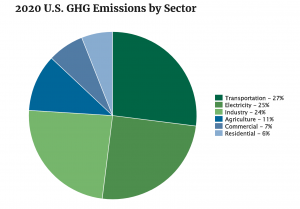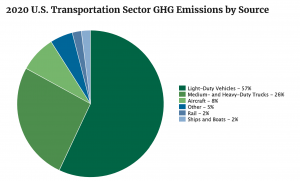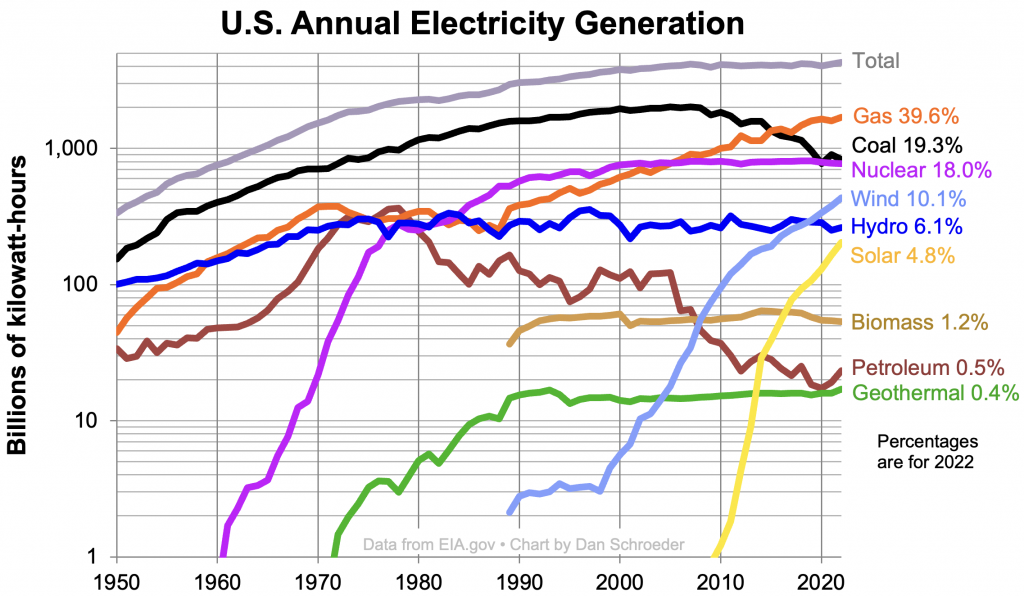52 Photos – Week 16


52 Photos – Week 15


52 Photos – Week 14


Lighting – Incandescent, CLF, LED, Integrated LED
With discussion about the Administration wanting to push forward with moving from the current approximately 6% of electric vehicles to 66% in only nine years without letting the market make the decisions, the changes from incandescent lightbulbs come to mind.
Reason Magazine has published an article arguing that this push will actually slow the development of better battery technology because auto manufacturers will have to double down on the current technology to meet these goals. If given time from the market and people buying as the technology develops (as they have been doing) the technology will develop with better batteries that will be less expensive, smaller, and won’t use materials that are as scarce as the materials used in batteries today.
Waiting would also give the infrastructure time to be built up, charging stations time to be built, time to charge could conceivably be shortened to be comparable to fueling up an internal combustion engine vehicle, etc.
Back to lighting. Back in 2007, the US passed the Energy Independence and Security Act of 2007 which would essentially ban incandescent light bulbs by 2012. The replacements for these were Compact Fluorescent Light bulbs (CLF) which were more expensive but we were told that they would also last longer so that the upfront higher cost would be borne out by the longer life. Personally, I never really found that much of a longer life.
Disposal of an incandescent light bulb was easy. You put it in the trash. It was simply made. Glass and metal. Compact Fluorescent Light bulbs were not so easy. They contained mercury. You weren’t supposed to just toss them in the trash. Actually, CFLs are now due to be phased out by 2025 from a DOE regulation to be put in place at any time now.
Light Emitting Diode lights are now de rigueur. They can be in any color, cold or warm, dimmable from 0 to 100%, and all this in the same light. They come in “smart” and “non-smart” versions, the non-smart versions tending to be less versatile – but they may still come with a remote control for variety.
I have several types of LED lights in my home. I have some of the “dumb” ones that are in ceiling lights. I have some in lamps that are plugged into “smart” plugs. I have some in my outdoor light fixtures. I have some “smart” bulbs in lamps. And I have some LED fixtures. These, I’m not so sure about.
In the kitchen, we had a nice fixture that I really liked. It was somewhat off-center so I think that they may have replaced a fluorescent fixture there at one point. There is still a fluorescent fixture above the sink and two smaller fixtures under the cabinets. We had those converted to LED after we moved in.
Recently that fixture in the kitchen started to flicker so we thought we just needed to change a bulb. No. When we opened up the fixture we found that it had built-in LED strips instead of bulbs. It was an integrated LED fixture. This was somewhat surprising because the fixture itself was thick glass and heavy metal. It was definitely deep enough to hold bulbs. But, because of the LED integration, the entire fixture must be replaced when the “bulbs” go out.
Because of the quality of the actual fixture (metal and glass), this must have cost the previous homeowners a pretty penny. I don’t know when they purchased it, but we’ve been here for four years now and
These integrated LED fixtures have only been around for a few years though starting with track-, can-, and office fluorescent-type replacements around 2014. Since then they’ve expanded into home ceiling and wall fixtures and outdoor fixtures for doors, garages, porches, patios, posts, etc.
The problem with these integrated fixtures is that the entire fixture needs to be replaced when the light doesn’t work anymore. It’s not a simple matter of changing a bulb (or two). The integrated LED lights are supposed to last 50,000 hours. We’ve lived in the house for four years and we turn that overhead in the kitchen off when we’re not in the room. Frankly, I don’t turn it on if I don’t need it. It was probably under five years old when we bought the house, and I’d say it may have been around eighteen months old or so. The house had been on the market for at least that amount of time. I think the previous owners may have had a fluorescent in the kitchen and the realtor suggested they replace it.
The light the previous owners installed wasn’t very bright either. When we replaced it one of the things we looked at was the lumens as well as the warmness and coolness of the light. The one we finally chose even has a remote to be able to change the settings as we wish. It’s also flatter and closer to the ceiling. I’ll be redoing my kitchen in the next few years and with it, the whole lighting scheme, so this will do for now.
Our laundry room had a big fluorescent fixture in it with a smaller regular fixture with a light bulb by the garage door. We bought two LED fixtures in two sizes that matched. The bigger one replaced the fluorescent fixture and the smaller one replaced the other fixture. The bigger one is not centered because the fluorescent fixture’s electric box was to one side of the fixture, not centered. This will be fine. These fixtures are plastic and cheap and in a utility area.
Our fourth bedroom was converted to a closet by the previous homeowners. They had also replaced the overhead light in this room with a fluorescent fixture. We replaced this too with a regular overhead fixture.
Since the integrated LED fixtures have to be replaced when they go out you have to buy a replacement. If you can’t find a match you’re out of luck. We couldn’t find a match to the kitchen fixture (I loved the look of the fixture but not the amount of light it gave – which could have been adjusted with new light bulbs!) So we ended up with a new fixture, flatter and closer to the ceiling with adjustable lighting.
On the other hand, I have three matching post fixtures in the front and six matching post fixtures in the back along with 10 matching carriage lamps by the doors and one hanging lamp by the front door. Most of the carriage lamps still have incandescent candelabra bulbs in them. The ones by the garage door have been replaced with LED bulbs. The post fixtures and the hanging fixture bulbs were replaced with LED round bulbs by us. The fixtures require that you take all the glass out to replace the bulbs and some are awkwardly placed. If I were to replace these with coordinating integrated LED fixtures I might not have to change bulbs but if any one of the fixtures failed and I couldn’t find a matching replacement…
One could have this issue with interior fixtures as well. Matching sconces that would need complete replacement – not just one – because the product was discontinued or is otherwise no longer available.
Companies do this to us enough already. Discontinue the products we love. Suddenly we can’t find the candy we like, the flavor of something we like, the color of lipstick, the jeans that fit us so well, the scent of air freshener that didn’t make us sick…
A fix for the integrated LED fixtures could be a snap-in replacement LED unit. Of course, that would require some coordination among manufacturers for sizes, connectors, and types of “bulbs” – simple lights, programmable, smart, remote control, etc.
Push For Electric Vehicles
Updated below:
The Administration is pushing for 2/3 of all new vehicles to be electric by 2032 starting in Model Year 2027 which is only a few model years away. This year is Model Year 2024. Vehicle manufacturers have designed and are building the 2024 models to start selling and delivering in September. They’ve already started showing them at the big auto shows in Detroit, Chicago, New York, Atlanta, and more.
The EPA and the Administration are moving far too fast with the push. It’s all fine and dandy to say that they want 66% of all vehicles to be electric by 2032 but they aren’t looking at any other variables. At least they don’t seem to be.
They say that they’re going to reduce carbon and pollution. The EPA states that transportation is the largest source of greenhouse gasses in the US and cars are the largest part of that. Transportation is 27% of the total by sector. Cars (light-duty vehicles) are 57% by source. Another sector of greenhouse gasses is Electricity. That one is 25%. Change that 57% of the Transportation sector and add it to the Electricity Sector. Because you have to generate the electricity to charge the batteries for the electric cars.


So, your Transportation Sector is now 12% and your Electricity Sector is 40%.
You’ve cut off the bottom of the blanket and resewn it to the top.
Electric vehicles in a city reduce exhaust pollution. It does make it more pleasant for the people in the city. But the electricity has to come from somewhere. Coal, natural gas, and petroleum provide the fuel to generate power in 60% of the plants in the United States. Nuclear provides another 18%. The remaining comes from the so-called “renewables” hydroelectric (6.1%), geothermal (0.4%), biomass (1.2%), solar (4.8%), and wind (10.1%). Some of these, such as hydro and geothermal, are geographically locked. You can’t have a hydro plant in the middle of the desert. Solar and wind are also geographically limited. Windmills require areas where the wind blows consistently. Solar requires areas where the sun shines on more days than it doesn’t. Wind and solar farms can’t go just anywhere.
In order to reduce the 60% of power plants fueled by coal, natural gas, and petroleum they’ll have to be replaced by nuclear plants which aren’t as geographically limited. Solar and wind aren’t going to reduce or replace the coal- and gas-powered plants. Even though there was a reduction in coal-powered plants, they were replaced by gas-powered plants, not “renewable”-powered plants.

Wind creates unrecyclable waste when the huge fiberglass blades are disposed of. The masts are steel and can be recycled. Solar panel recycling is under study in the US and isn’t commercially viable at this time so they go in landfills unless someone can reuse or refurbish and reuse them.
Then there’s the infrastructure. The administration touts the addition of many EV charging stations they are nowhere near as plentiful as gas stations. They may be counting on people charging their vehicles at home – but that requires that people install the proper home charging station which can require permitting in your location. It will also require a licensed electrician for installation. And, if you have more than one vehicle, you may require more than one charging station. This also adds to your monthly electric bill.
That’s if you’re a homeowner of a single-family home or maybe a semi-detached home. If you are in a multifamily family building or are a renter that’s a whole other ball of wax. Who pays the building’s electric bill? How will EV charging be billed? Are parking spaces assigned? Will they be? Will a condo association purchase pay-as-you-go charging stations or establish a contract with one of the established companies? The same questions can be asked of landlords and apartment buildings. There are some apartment complexes that are quite large with hundreds of units. How will they provide charging units?
How much will rents rise because of this?
Electric cars are more expensive than internal combustion engine cars. If an electric car loses power due to its battery dying it’s dead. It needs to be towed to a charging station and you have to wait until it’s charged to go anywhere else. If an ICE car runs out of gas someone can bring by a gas can with a gallon or five and you and your car can get to a nearby gas station and fill up in under 15 minutes and be on your way. Oh, and if the battery in your ICE car dies, it’s generally a matter of a jump start to get it going again and it will recharge while you’re driving. Replacement cost for the battery for an ICE car is generally under $150 and for an EV it can cost half the cost of the car itself.
Range is still longer with an ICE and refills are still shorter. Most of the EV charging stations are still Level 2 which is the slower charging. A Level 2 charger can charge an EV from empty to full in FOUR to TEN hours. Granted, you don’t want to be on empty on a road trip, but this necessitates more frequent stops for longer periods to keep your EV charged up. The DC Fast Chargers can charge to 80% in 20 minutes to an hour. Twenty minutes is a little more comparable to a visit to an interstate gas station with fill-up and snack and restroom break, but I’d guess that’s an outlier and the visits are more likely in the middle of the 20- to 60-minute range.
Update: Motortrend magazine has a real-world article about charging time for an EV vehicle…
Their Ford F-150 Lightning said it would take a little over an hour to go from the 13% (30 miles range) they were at to an 80% charge. This was at a 7-Eleven and one of their own branded 7Charge Fast Chargers. Their 80% brought them up to 227 miles of range and was 87.619kW of electricity at $0.59/kW for a total of $51.70. They also spent another $33.41 on drinks and snacks at the 7-Eleven while they were waiting for the truck to charge. That extra expense was, of course, completely unnecessary and not an actual part of the vehicle charge.
Our Chevy Silverado 1500 (similar-sized ICE) would have taken about 10 minutes including snacks and cost ~$60 for a 100% fill-up with a ~435-mile range.
Lithium mining to obtain the main component for the batteries for the EVs creates its own problems even if it can be startlingly beautiful.

So, as I said earlier, the EPA and Administration have decided to push for a mostly electric fleet of new cars starting in three model years to reach that goal by 2032 but they haven’t looked at the other variables. They decided and that’s that.
He is Risen
He is Risen indeed.
52 Photos – Week 13


52 Photos – Week 12








